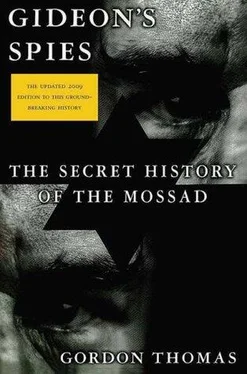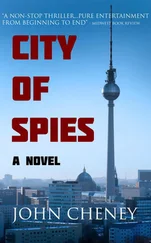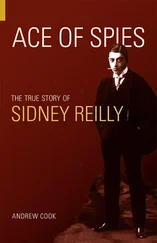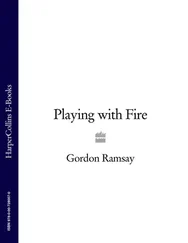Gordon Thomas - Gideon's Spies
Здесь есть возможность читать онлайн «Gordon Thomas - Gideon's Spies» весь текст электронной книги совершенно бесплатно (целиком полную версию без сокращений). В некоторых случаях можно слушать аудио, скачать через торрент в формате fb2 и присутствует краткое содержание. Город: New York, Год выпуска: 2009, ISBN: 2009, Издательство: Thomas Dunne Books, Жанр: История, на английском языке. Описание произведения, (предисловие) а так же отзывы посетителей доступны на портале библиотеки ЛибКат.
- Название:Gideon's Spies
- Автор:
- Издательство:Thomas Dunne Books
- Жанр:
- Год:2009
- Город:New York
- ISBN:978-0-312-53901-6
- Рейтинг книги:4 / 5. Голосов: 1
-
Избранное:Добавить в избранное
- Отзывы:
-
Ваша оценка:
- 80
- 1
- 2
- 3
- 4
- 5
Gideon's Spies: краткое содержание, описание и аннотация
Предлагаем к чтению аннотацию, описание, краткое содержание или предисловие (зависит от того, что написал сам автор книги «Gideon's Spies»). Если вы не нашли необходимую информацию о книге — напишите в комментариях, мы постараемся отыскать её.
Gideon’s Spies
Gideon's Spies — читать онлайн бесплатно полную книгу (весь текст) целиком
Ниже представлен текст книги, разбитый по страницам. Система сохранения места последней прочитанной страницы, позволяет с удобством читать онлайн бесплатно книгу «Gideon's Spies», без необходимости каждый раз заново искать на чём Вы остановились. Поставьте закладку, и сможете в любой момент перейти на страницу, на которой закончили чтение.
Интервал:
Закладка:
Then the Fox News channel entered the arena. It assigned a hardworking reporter, Carl Cameron, to the story. He picked up the first hint that this could be a Mossad-generated operation.
That provoked an immediate response from the vast and powerful Jewish lobby in Washington, whose tentacles reach out across America. The American-Israel Public Affairs Committee (AIPAC) is a leading political lobby, able to penetrate Congress, the intelligence community, and the White House. The Jewish Institute for National Security Affairs (JINSA) has equally powerful connections. The Anti-Defamation League (ADL) and the Committee for Accuracy in Middle East Reporting in America (CAMERA) are strident watchdogs over what the media publish about Israeli affairs.
The moment Cameron went on air on the Fox network to announce he had uncovered “a possible espionage and surveillance operation by Israelis against al-Qaeda operatives in the U.S.,” the combined resources of the Jewish lobby directed their fire against him.
But even as they launched their first volley, Cameron was saying in a second report that “many of the Israelis had failed polygraph tests when asked about their alleged surveillance activities in the United States.”
In Paris, Le Monde, France’s newspaper of record, reported that “a vast Israeli spy network had been dismantled in the United States, the largest operation of its kind since 1985 when Jonathan Pollard was caught selling top secrets to Mossad.”
With renewed ferocity, the Jewish lobby set to work.
The Israeli embassy predictably reiterated what it said to all such allegations: “No American official or intelligence agency has complained to us about this. The story is nonsense. Israel does not spy on the United States.”
The Israel lobby excoriated Carl Cameron for his exposé. Representatives of JINSA, the ADL, and CAMERA argued that the Fox report “cited only unnamed sources and provided no direct evidence.” CAMERA’s associate director, Alex Safian, said “it was having ‘conversations’ with representatives of Fox News regarding Cameron’s piece.”
Safian also questioned Cameron’s “motives” in running the story. “I think Fox has always been fair to Israel in its reporting. I think it’s just Cameron who has something, personally, about Israel. He was brought up in the Middle East. Maybe that has something to do with it. Maybe he’s very sympathetic to the Arab side. One could ask.” The implication was that Carl Cameron was a bigot; Safian would later make the same allegation about the entire editorial staff at Le Monde .
“I’m speechless,” said Cameron when he heard of Safian’s statement. “I spent several years in Iran growing up because my father was an archaeologist there. That makes me anti-Israel?” Cameron, the chief Washington correspondent for Fox News, had never before been attacked for “biased” coverage.
Michael Lind, a senior fellow at the New America Foundation—a think tank—and former executive editor of The National Interest, a journal, said: “Among foreign service officers, law enforcement, and military, there is an impression that you can’t mess with Israel without suffering direct and indirect smears, such as being labeled an Arabist.”
While the attacks on Cameron and Le Monde were at full throttle, the “art students” were quietly deported to Israel for what the U.S. Immigration and Naturalization Service called “routine visa violations.”
No mainstream media outlet asked why the CIA, through its National Counterintelligence Executive, had been involved. Or why the FBI had established that the “students” had visited no fewer than thirty-six Defense Department facilities.
Finally, as the “students” were flying out on El Al back to Tel Aviv, all traces of Cameron’s reporting vanished from the Fox News Internet site. In its place ran a note. “This story no longer exists.” A CIA spokesman said: “We’ve closed the book on it.”
Shortly afterward, Halevy’s tenure at Mossad came to an end.
There was one other legacy Efraim Halevy would take into retirement: his decision to revisit the deaths of Princess Diana and Dodi al-Fayed. After reading the Mossad file on the incident, he had asked Maurice, the agent who had been involved in trying to recruit Henri Paul—the driver of the car in which the young lovers had died—to prepare a new record of the couple’s last day together.
Had it been mere curiosity on Halevy’s part? There were rumors that he had met Diana during his time as Israel’s ambassador to the European Community. If so, he would not be the first diplomat to come under her spell. But more likely is that Halevy wanted to ensure that there was no new evidence to support the claims that Mossad had been indirectly involved in the deaths.
Maurice, now a desk man at headquarters, had prepared a detailed account of the last day in the life of Diana and Dodi.
Those who have read the account say it does flesh out the detail in the original Mossad report. Mohamed al-Fayed, the father of Dodi, is described as a man with a continuing obsession that Diana was pregnant and that she was the object of surveillance by the CIA, MI6, and French intelligence from the moment she and Dodi flew into Paris. There are transcripts of various phone calls, including one from Diana’s former Scotland Yard bodyguard, warning her to “be careful.” The evening of August 30, 1997, which the couple spent together in Paris, is carefully time-tabled. Next comes a similar recounting of how, in the first moments of Sunday, August 31, the couple rushed from the Ritz Hotel to try to reach Dodi’s apartment a short drive away. Then Maurice had focused on the white Uno. It had been parked close to the Ritz. Other photographers say it belonged to the paparazzo James Anderson. He had made taking photos of Diana his speciality. It had earned him a fortune. But it has been established Anderson was not present on the night in question.
Maurice described the white Uno in hot pursuit of the Mercedes, Henri Paul at the wheel, Diana and Dodi in the back, as the two cars raced neck and neck into the place de L’Alma underpass, where Diana and Dodi met their deaths.
Later a car of the same make, but recently painted blue, was found in a Paris garage. When the paint was scratched, the car was white underneath. The police did not pursue the matter. Did they already suspect this was not the vehicle they were searching for? If so, why did they not visit the car-crusher facility in the Paris suburb where another white Fiat Uno, hours after the fatal crash, had been reduced to a block of unidentifiable metal? Did they also realize that would be a waste of time?
Maurice noted in his report: “Almost four hours after the crash, James Anderson suddenly flew to Corsica. There was no known professional reason for him to do so. There was no one famous on Corsica to photograph at the time. In May 2000, a burned-out car was found in woodland near Nantes in France. The driver was still inside the car. DNA tests showed the body was that of James Anderson.”
And there lies the last mystery, one that will now perhaps never be resolved. Had Anderson gone to Corsica to collect a substantial fee for loaning his white Uno? But to whom? Mossad certainly had no interest in pursuing Diana or Dodi. Could it have been another secret service? Anderson was reputed to have connections to both French and British intelligence. Even if that was true, it is still an unacceptable leap—as Mohamed al-Fayed made—to suggest that Anderson’s car had been “borrowed and used to force Henri Paul to lose control over the Mercedes.”
But the questions do not stop. Why was the police investigation into Anderson’s death so perfunctory? Why had the police neither attempted to find out why he had gone to Corsica nor conducted a detailed investigation into his bank accounts? Like all wealthy men, Anderson kept a number of accounts around Europe. But none of these were checked to see if he had deposited a substantial amount after his trip to Corsica.
Читать дальшеИнтервал:
Закладка:
Похожие книги на «Gideon's Spies»
Представляем Вашему вниманию похожие книги на «Gideon's Spies» списком для выбора. Мы отобрали схожую по названию и смыслу литературу в надежде предоставить читателям больше вариантов отыскать новые, интересные, ещё непрочитанные произведения.
Обсуждение, отзывы о книге «Gideon's Spies» и просто собственные мнения читателей. Оставьте ваши комментарии, напишите, что Вы думаете о произведении, его смысле или главных героях. Укажите что конкретно понравилось, а что нет, и почему Вы так считаете.












